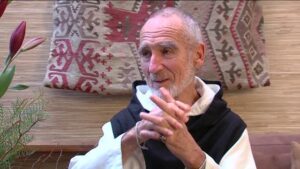School Teachers Share Their Experience with Mindfulness
Classroom teachers make it possible for Inner Strength to do our work.
This collection of insights come from the school teachers’ view on what it’s like to have a mindfulness program in their classrooms.
The coronavirus pandemic shut down schools and thrust youth (and educators) into stressful and chaotic home environments, isolation, and new traumas. Students and teachers alike needed tools to navigate these new waters, so upon returning to in-person classes, some teachers introduced mindfulness into the classroom, while others built upon already established foundations.
Inner Strength has been a part of both of these types of mindfulness integration, so, as the school year comes to a close we thought we would take a look back and chat with host teachers.
Mr Wright
Horace Furness High School, Philadelphia
How do you think the program went this year?
[This was my first year hosting Inner Strength…] Initially students were resistant to it, but as the year progressed and as they became comfortable. There were a couple of exercises where students had to focus on different things about how they’re feeling, and they had to manifest their thoughts and literally imagine in their mind catching them in a bubble, just so that they can stay in the moment and focus. A lot of students were fond of that activity. I would say for my students, our relationship definitely grew over time. I don’t know if this is necessarily in the context of this program. I know the program is connected to it, but there are multiple moving parts. There are times where I feel really comfortable where I can be really silly and I don’t have to be as strict. As I got a chance to spend more time where I could joke and play around and be silly, and it made for a much safer class.
Has having this curriculum this semester shifted the way you think about the role of mindfulness or other social-emotional learning programs in schools?
“‘m really fond of the program. I’m really fond of the strategies that are taught in the program, and I think it’s worthwhile for students to do it because students don’t always know how to self-regulate. They don’t know how to name the emotion that they’re feeling and to stop and pause and think what do they need to do for themselves to get themselves back on track. And more of that needs to be taught because the bottom line is this: that a student who is offset emotionally cannot learn until they become regulated again. So these strategies are absolutely invaluable and are absolutely needed so that I can teach.
If you were talking to a teacher who had never been exposed to any kind of social-emotional learning program and was being asked to host this for the first time, what advice would you give them?
I would definitely recommend that they become a host to the program. And my advice is this, that when it comes to teaching, build in those brain breaks to help your class focus. Even at the beginning of your class, students need to be regulated. This is a perfect opportunity to use the strategies from this program to help reset your students and even reset yourself.
Do you have any final words that you wanted to share?
Just thank you. And thank you, Haylee Warner, (my Inner Strength Instructor). You are absolutely amazing and you are welcome anytime.
Mr. Leed
Carver High School of Engineering Science
How many times have you hosted the Inner Strength Program?
Three years. First was in person with Julie Coopersmith. Last year we did virtually, and then again, this year with Julie.
What has made you keep coming back?
[The practices] help calm the room. I see students initially not buying in – they’re too cool for school, this is weird. But eventually Julie wins them over and the calming creates a better climate in the room when she’s not here. And kids need a break and I need a break. It’s good to acknowledge that we’re all human and we’re all dealing with stress and anxiety and pressure.
Do you have reflections about how this semester went compared to the previous two that you’ve hosted?
I see two big things. The first is the unintended consequences of the lockdown are the mental health crisis and gun violence, or just violence across the city. Both things have gotten exponentially worse. So now more than ever, we should be doing mindfulness. I practice it and I do it, but not in an explicit whole period way that Julie does. So it’s really great to have her to extend what I’m already doing. And then I reinforce it a little. Like I said, I teach chemistry, but really that’s just the context through which I’m helping the kids learn and grow. [The second is] having the opportunity to pause and have Julie come in and do her thing, it transcends the bus route. I call myself the bus driver of the class. It transcends the bus route to something bigger than chemistry or physics or whatever it is we’re doing.
If you were going to advise a teacher who hasn’t hosted Inner Strength before, what advice would you give them to make sure that it felt congruent with their classroom?
The advice I would give is, it’s a break from the curriculum and it’s a break from direct instruction, but it’s not a break from being there, being present in the moment, making eye contact and leading by example. You can’t sit there and grade. Lead by example, model that. And support the Inner Strength instructor by doing the exercises when they’re not there.
We greatly appreciate Mr. Leed’s and Mr. Wright’s time, support, and energy in the classroom and we look forward to coming back to their schools in the fall. |



